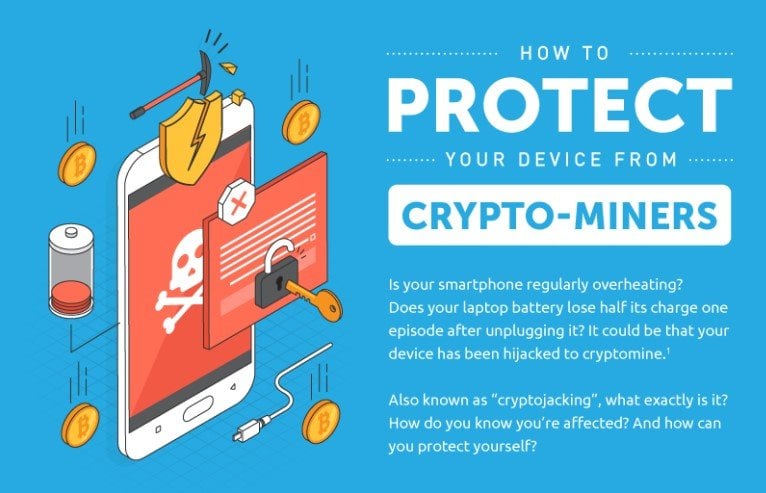The digital age has brought so many advantages to our lives but it’s also left us a lot more open to unscrupulous people hacking into our devices to steal our money, our identity or just cause mischief and problems for us. You might think you know all of the ways this can happen, but did you know that your device could be getting used for crypto-mining? Do you even know what crypto-mining is?
Don’t worry, help is at hand with this guide by 911Metallurgist, which covers everything you need to know about it, the signs to look out for and the ways you can prevent it from happening.
Crypto-mining, also known as cryptojacking, is where hackers use your mobile device to ‘mine’ cryptocurrencies for their own financial gain. Mining a cryptocurrency is the means by which you create income from them, and it takes a lot of computer processing power to do it, so some choose to boost their ability to do it by using other people’s devices to do it. But you don’t have to let them use yours.
Q2 hedge fund letters, conference, scoops etc
How big of a problem is crypto-mining? Well, according to security experts McAfee, cases of it increased by an incredible 629% in the three months between late 2017 and early 2018, and there have been high profile cases of federal courts and even the British National Health Service having systems cryptojacked, causing huge issues.
In January 2018, the Smominru crypto mining botnet was discovered to have infected more than a half-million machines, mostly in Russia, India, and Taiwan, with an estimated haul for miners of around $3.6 million in the cryptocurrency Monero, which has become popular with crypto-miners because of its focus on anonymity. This makes it almost impossible to track what happens in it, while Monero is also much more accessible for potential miners compared to Bitcoin, which requires special hardware to do it.
The appeal for crypto-miners is that it require a lot less work on their part than running ransomware, another common hack that has caused chaos and disruption in recent years. Where only a handful out of every 100 targets for ransomware might pay up, it’s likely that 100 out of 100 devices being used for mining will succeed in making money.
So how do you know when your cellphone is being crypto-mined? Telltale signs can be that its overheating or running out of power much more quickly than you’d expect - because its having to work much harder than you think. Worse than that, crypto-mining and resultant overheating can cause the processing chips to be permanently damaged.
Devices become infected when they download an app or image from a website, download or pop-up, causing them to run a background script, which is what mines the cryptocurrency without you knowing anything about it. But there are ways you can protect yourself from being used in this way.
How to know if your device is being used for crypto-mining
If you suspect that your phone or laptop might be showing signs like running out of battery quickly but aren’t certain what is causing it, there are ways you can find out. Checking your CPU usage is simple to do on Mac or Windows computers and anything higher than 40% of usage with all of your programs closed is a sign that something might be happening in the background that needs further investigation.
It’s a good practice, especially when running your computer on battery, to close any applications that aren’t currently needed, and generally keeping an eye on CPU usage. On your phone it’s also easy in the Settings to check your battery usage and find out which apps are draining it most quickly. If there’s anything you don’t recognise, remove it.
And finally, there’s also a test you can use when online to see if any of the tabs you have open are cryptojacking your device. The people behind the Opera browser have created cryptojackingtest.com to do just this, so if you have a concern, use a tool like this.
How to protect your laptop
There are mining blocking plugins you can download for your browser, like No Coin and minerBlock, which will stop you from being cryptojacked. Buying a secure home router is another good way to protect all of your devices when you’re logged on at home. And finally, setting strong passwords is a must, so don’t go for anything obvious or easy to guess, and make sure to change them frequently. Using something like LastPass helps you securely manage all of your passwords so you don’t forget them.
How to protect your phone
The first rule of keeping your phone safe from cryptojackers is to use your common sense when downloading apps. Only ever get those by reputable companies and that are available through official app stores. This doesn’t eliminate the risk, but does at least reduce it because these apps will be monitored for security issues. Using a browser that actively fights cryptojackers, like Opera is another way to stay safe online.
Conclusion
You might not have known that crypto-mining even existed before reading this guide, but it’s a real problem that needs to be monitored. Thankfully you now have the tools and tips to not only recognise the first signs of when your device is being used for someone else’s benefit, but also do as much as is currently possible to prevent it from happening in the first place.







